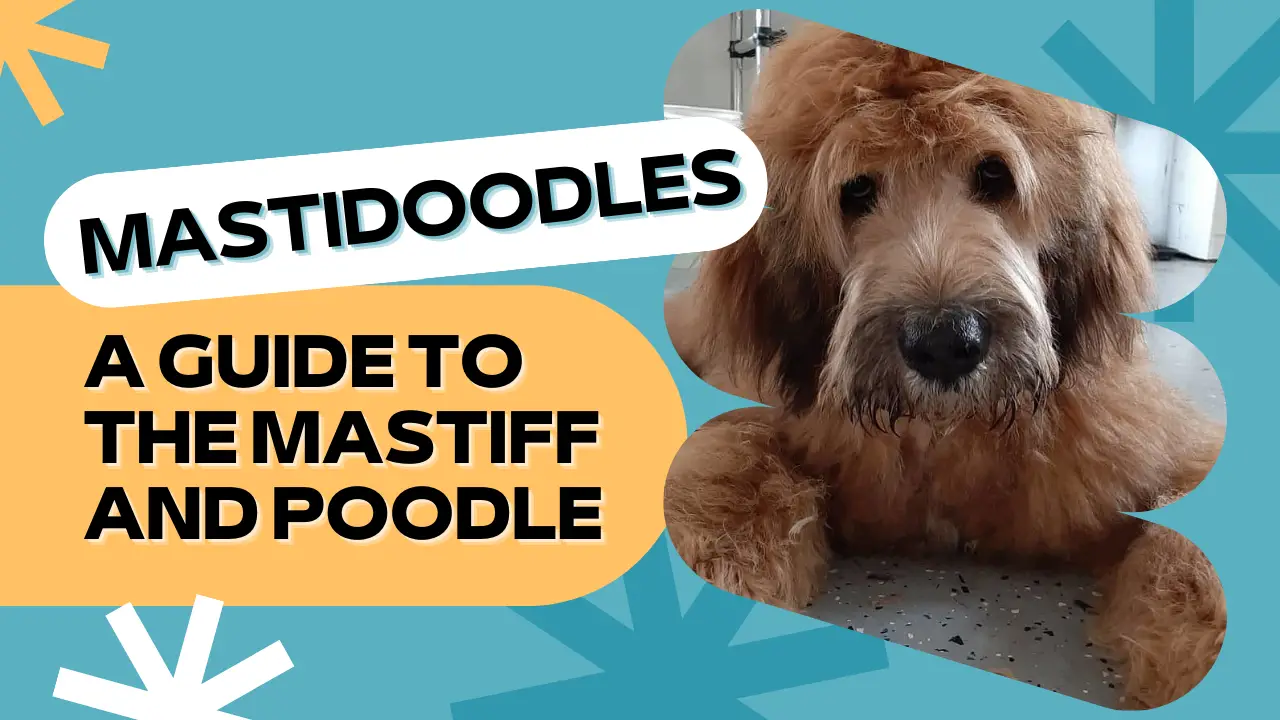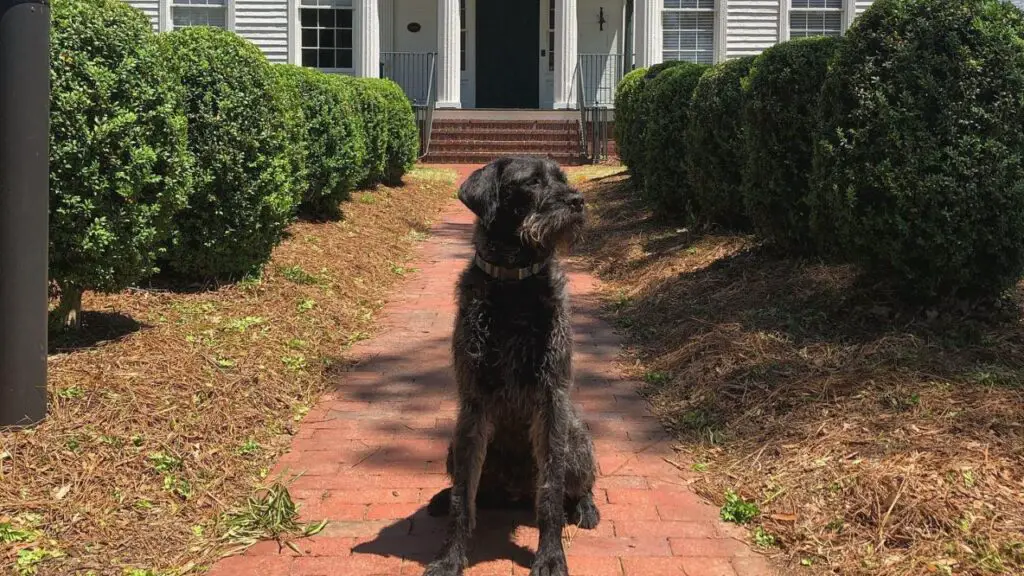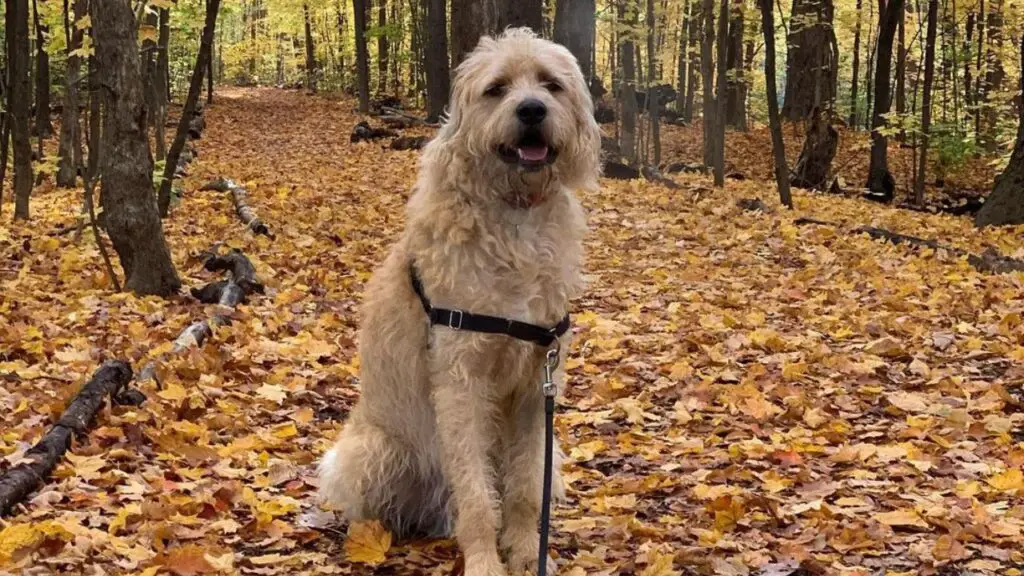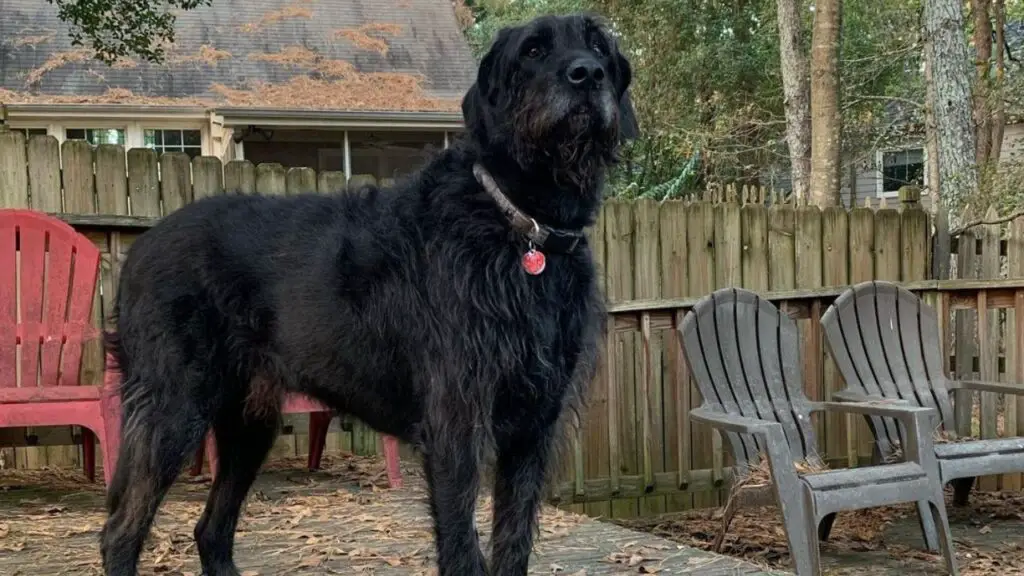The Mastidoodle is a stunning designer crossbreed produced by its parents, the Tibetan Mastiff and the Poodle, and tends to have a lifespan of 8 to 12 years. The Mastidoodle is a big, loyal and protective dog that looks like a teddy bear. They come from working dogs that used to hunt, protect, retrieve, and watch over things.

What Will You Learn? 👇
The Mastidoodle’s parents
Poodle
To gain a greater understanding of how truly unique a Mastidoodle is, we have to look at its parents. First up is the Poodle, which originates all the way from Germany. Many noblemen kept this breed to hunt dogs, ducks, and other birds.
Soon after its popularity rose in Germany, it traveled to France and became the national dog of France. Today the Poodle is well known for its loving and intelligent nature. You can even find Poodles worldwide in three distinct sizes: the Standard, Toy and Miniature.

Read our Smart Poodles - Smart Tricks eBook for only $2.99
Dive into a treasure trove of engaging tricks and tips designed specifically for your poodle!
Tibetan Mastiff
As the name suggests, it’s believed that the Tibetan Mastiff originates from Tibet; however, it has served as a nomadic dog for those living in high-altitude environments in India, Mongolia, China, Bhutan, and Nepal. This is a large dog breed and served as a guard dog, and is extremely territorial towards strangers.
Now, looking at the Mastidoodle’s two parents, do you see what we mean by two completely different breeds?
The truth is, the Mastidoodle is nothing short of remarkable. To know why it’s so amazing, let’s dive into its traits, temperament, and owner information.
Temperament
Don’t let the aggressive nature of a Tibetan Mastiff put you off from bringing a Mastidoodle into your home. This breed is actually a giant cuddly teddy bear and has a genial nature.
They’re loyal, gentle, and loving making them perfect for homes with children. Nevertheless, if you do get one and have children around, make sure they’re supervised, so they don’t knock or accidentally injure your child.

However, they inherit their guard dog nature from their Tibetan Mastiff parent, but that’s more as a protective element against burglars or strangers entering your home. A Mastidoodle will not growl, but they may give off a courageous warning bark and use their size to show they’re not a breed to mess with.
Like their Poodle parent, they’re a highly smart dog breed, and they must have adequate mental stimulation, so they don’t get bored easily.
Speaking of which, you must not leave them too long on their own in the house as they could definitely engage in boredom behaviours! That’s the last thing you need is your dog chewing up your furniture and messing up your home.
Activity requirements
Owning this dog can be an exciting yet challenging time, especially if you live a busy life. If you want to own a Mastidoodle, you need to allocate 60 minutes to take it out for physical exercise.
You don’t necessarily have to take them on long walks for this period, but you can play fun games like tug of war, playtime, and short runs. However, given the hybrid is a large dog, you should aim to at least cover 10 miles of walking with them each week.
What does a Mastidoodle look like?
The Mastidoodle has a great combination of genes they inherit from both parents. To understand their identity, let’s quickly jump back to the Poodle. The Mastidoodle often has a Standard Poodle as their parent, whose height averages around 45-60cm/17- 23 inches and weighs between 45-70lbs/20-31kg. A Poodles coat tends to be curly, soft and tends to be hypoallergenic.
Whereas a Tibetan Mastiff weighs between 34-74kg/75-163 lbs and grows up to 61-71cm/24-28 inches in height. Their coats are medium length, and they’ve got two layers which means they shed a lot.

Now given this stark contrast, are you ready to know what the Mastidoodle looks like?
Height and weight
First of all, the typical height of a Mastidoodle is 45-63cm/18-25inches and weighs a whopping 65-100lbs/30-45 kg. That’s pretty big, right?
Well, for sure, it definitely puts them in the large dog breed category. This makes them a dog that’s only suitable for large homes with a yard. Therefore if you’re an apartment dweller, I’m sorry, but you’re going to have to look for an alternative breed.
Features
This hybrid breed has heavy and broad characteristics. First of all, they often have a broad skull and a long muzzle, longer than their Mastiff parent.
You can usually find their muzzles come in the color of black, blue, brown, or amber. Mastidoodles tend to have long floppy ears and gentle circular eyes. Their eyes are an oval shape and come in the colors of hazel, brown, or amber. Generally, their body is long and thin but gives off a lean muscular appearance.
Coat
This hybrid breed tends to take more after their Tibetan Mastiff parent when it comes to their coat. Their coat is long, dense, and wavy and sometimes has a double coat.
However, there are instances where the Mastidoodle takes more after their Poodle parent and has a soft, wavy, and low shedding coat. Whatever style of coat they inherit depends on their genetics; they do, however, have common coat colors. You can typically expect to see a Mastidoodle having a coat color of brown, black, grey, cream, sable, and bindle.
Are they hypoallergenic?
Given that I previously highlighted their coat, it’s only natural to know about their shedding abilities. It can’t be fully guaranteed what qualities they will inherit; however, most of the time, they tend to have a dense wavy coat like their Standard Poodle parent.

If they do inherit this, it’s more than likely the grooming requirements will be very low due to them being low shedders. Whereas if they inherit more of their Tibetan Mastiff’s coat, it’s more than likely they will shed a lot very quickly.
Therefore in this context, as one parent is not hypoallergenic and the other is, it’s unlikely this hybrid will be.
If you suffer from many allergies, you might want to look after a Mastidoodle for a few days and see how your allergies respond to them.
Grooming requirements
If you plan to own a Mastidoodle, be aware they are a bit of maintenance. We mean that they need to be groomed daily to a few times a week (all depending on their coat). For example, if they have a coat like their Poodle parent, they should be brushed more frequently, whereas a Tibetan Mastiff may take only a couple of brushes a week.
Regardless of what coat they have, you should be taking them to a professional groomer every 6-12 weeks as a potential owner. Groomers help play an important role as they trim their fur and also stop it from getting matted.
Do note; if you live in a hot country or you’re about to go into a hot season, then a Mastidoodle will need to be taken to the groomer every 4-6 weeks to ensure they remain cool and don’t overheat from their thick coat.
If you’re planning on buying a Mastidoodle, you will want to use brushes that complement their coat. The best ones to use are a pin brush, dematter, scissors, and clippers. You don’t have to use clippers if you don’t feel confident enough; you can always get a professional to do that for you.
Mastidoodle Puppies
Mastidoodle puppies are quite a handful to own, and they need a lot of nurturing and time spent training them and socializing them. If you manage to do this from a young age, they will learn these behaviors quickly.
On average, a Mastidoodle costs between $650 – $3500 in the USA; however, outside of this country, prices may vary. If you’re looking to buy a Mastidoodle, it’s also important to factor in other costs like their veterinary care, food, toys, vaccinations, and more. Their annual medical costs alone could range from $290-$320.
Conclusion
Mastidoodle’s are large dogs to own; many people become intimidated by their size and are fearful they are aggressive like their Tibetan Mastiff parent. However, this is completely the opposite, and they’re more of a cuddly type.
This means if you have young children or elderly relatives living in your home, it’s most likely they will bond quickly and easily to them. Their shedding qualities can’t be fully guaranteed, and if you have allergies, it’s best you see a breeder or look after one for a few days to see how you react.
Plus, they’re not an expensive dog breed compared to others costing on average $350-$650 in the USA. But, you must dedicate a lot of time to looking after and exercising them.
Does the Mastidoodle sound like a dog that would interest you? Let us know your favorite features and characteristics of this breed down below.
Marko is the founder and author at PoodleHQ, where he blends profound expertise with formal training in Animal Behavior and Canine Genetics. With multiple generations of poodles under his care, he’s a breed connoisseur, honored with the Canine Care Excellence Award and lauded by the International Pet Enthusiasts Association.


Thank you for providing information about the Tibetan Masti-doodle. Your description of this hybrid dog is very accurate except for the price. The Chinese Tibetan Mastiff must be imported into the U.S. which is costly and currently there is an embargo in place. Also, the TM only comes into heat once a year in November so they only have one litter per year compared to other breeds having two heat cycles and litters each year. Typically, they only produce a couple liters due to advancing beyond breeding age. TMs are difficult to breed naturally as they don’t like to be mounted by other dogs so A.I is the usual method used. These limiting factors increase the cost to breed and whelp a litter of Masti-doodles. The average cost for a masti-doodle puppy is around $3500. The pup should be born from health tested parents and raised with an early socialization program and also assessed by professional trainers to determine temperament.